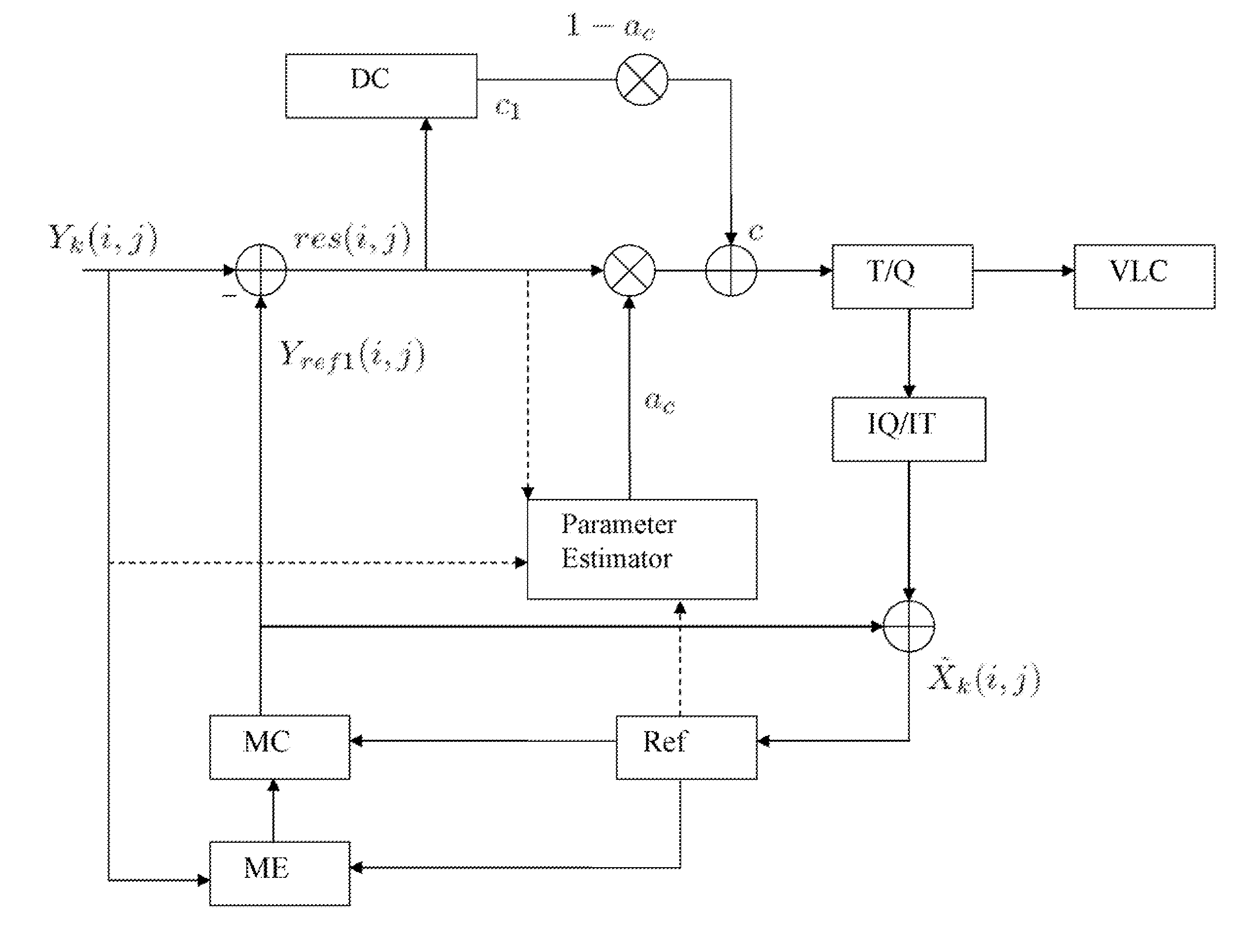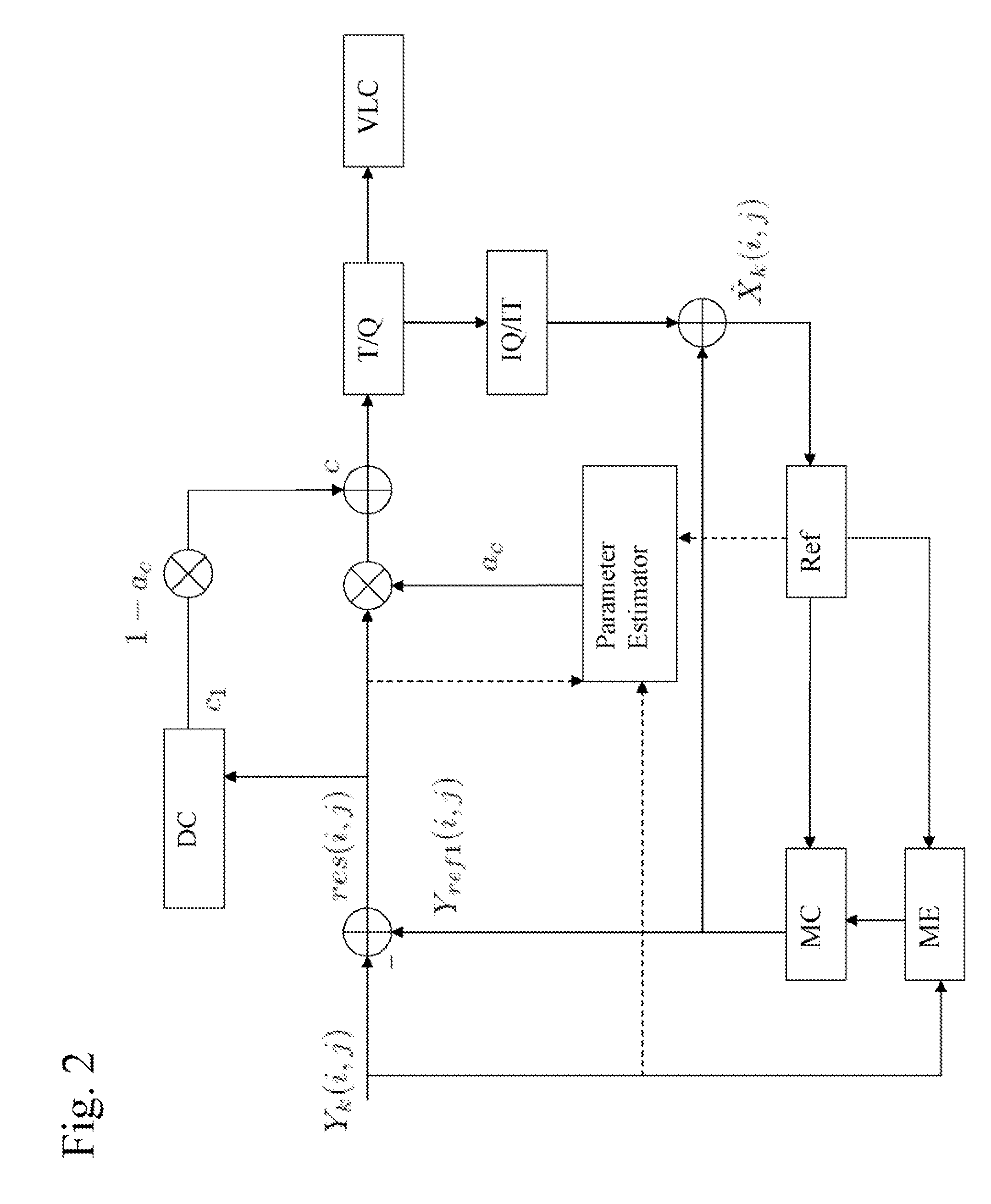Optimal Denoising for Video Coding
a video coding and denoising technology, applied in the field of digital signal processing, can solve the problems of many observers (both trained and untrained), time-consuming subjective quality evaluation, and loss of information in the coding process, and achieve the effect of the same or better performan
- Summary
- Abstract
- Description
- Claims
- Application Information
AI Technical Summary
Benefits of technology
Problems solved by technology
Method used
Image
Examples
Embodiment Construction
[0021] The numerous innovative teachings of the present application will be described with particular reference to the presently preferred embodiment (by way of example, and not of limitation).
The Multi-Hypothesis Motion Compensated Filter (MHMCF)
[0022] As shown in FIG. 1, a video sequence is composed of many consecutive frames. In the video sequence, assume there is a point object which can be tracked in all the frames. Suppose the original intensity value of this point object in frame k is Xk, and the observed value is
Yk=Xk+Nk. (1)
where Nk is the undesirable noise. Nk is assumed zero mean, with variance σn2. It is also assumed that Nk is independent over space and time and independent of Xk.
[0023] Ideally, Xk should be the same for all k. However, due to many reasons including inaccurate motion estimation, changing light conditions, and deforming objects, Xk changes from one frame to another. This can be described as
Xk=Xi+Zi,k (2)
where Zi,k represents the innovation in...
PUM
 Login to View More
Login to View More Abstract
Description
Claims
Application Information
 Login to View More
Login to View More - R&D
- Intellectual Property
- Life Sciences
- Materials
- Tech Scout
- Unparalleled Data Quality
- Higher Quality Content
- 60% Fewer Hallucinations
Browse by: Latest US Patents, China's latest patents, Technical Efficacy Thesaurus, Application Domain, Technology Topic, Popular Technical Reports.
© 2025 PatSnap. All rights reserved.Legal|Privacy policy|Modern Slavery Act Transparency Statement|Sitemap|About US| Contact US: help@patsnap.com



